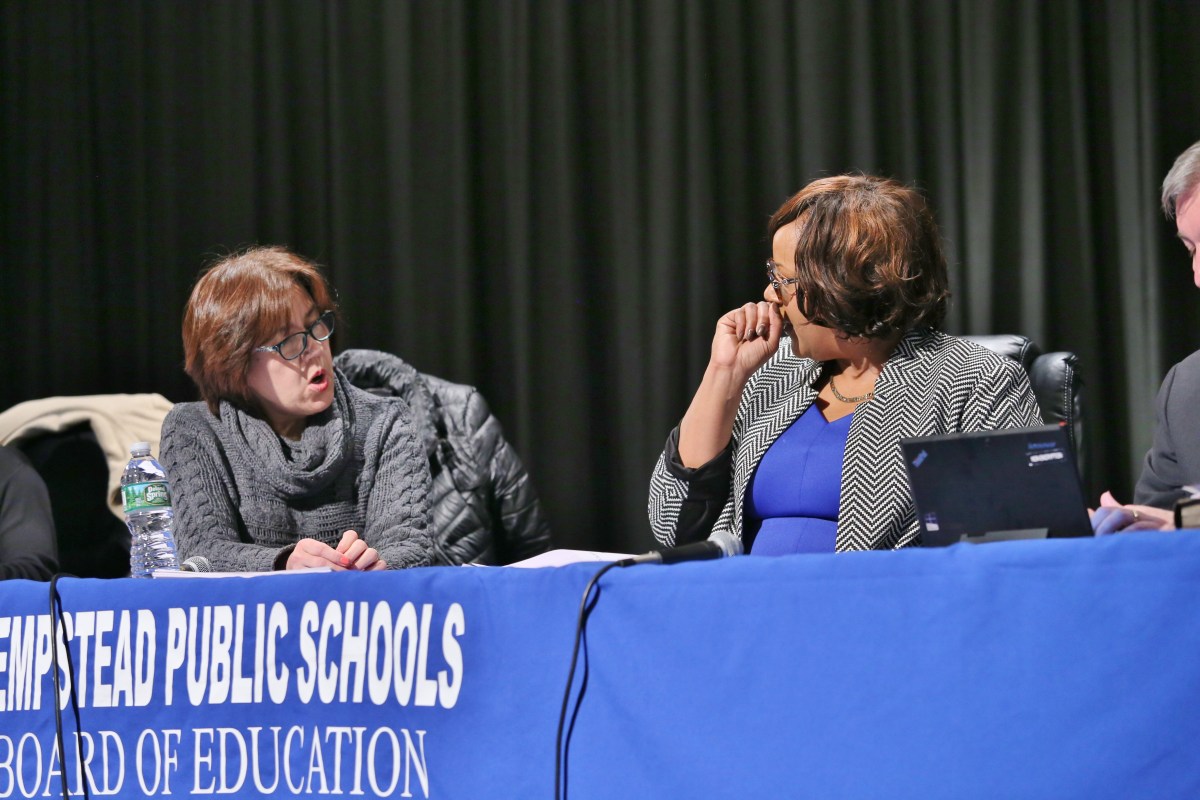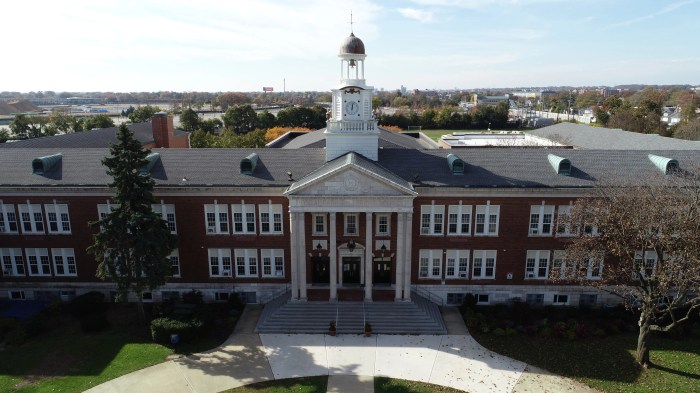Persistently struggling: That’s the term that the New York State Education Department used to describe the state of the Hempstead School District as it has once again come under a microscope.
Areas of critical concern that the state identified include student safety, nutrition, deteriorating buildings, gang activity, inability to collect and utilize millions of dollars in grants and funds, and graduation rates as low as 38 percent. To try and improve educational outcomes in the district, NYSED asked the schools’ chief to immediately begin correcting the issues highlighted in a January report, and submit monthly memos on the progress, beginning March 15. And NYSED Commissioner MaryEllen Elia sent an auditor to Hempstead High School in February, to review records and “evaluate if the school met its indicators related to credit accumulation” for seniors to graduate.
“As always, our number one priority is mutual: enable our students to meet their educational goals that will place them on the track to college and career,” Acting School Superintendent Regina Armstrong said in a statement in response to the state’s actions. “We welcome New York State’s cooperation in meeting these goals and will continue to do all in our power to provide our students with the resources they need to succeed in the classroom and secure a brighter future.”
At the same time, Armstrong is overseeing the District’s five-year capital plan, which would start with demolishing the long-shuttered Marguerite Golden Rhodes Elementary school and constructing a new school, to ease the burden of overcrowded classrooms. The three-year, $47 million project would be the first step in addressing the issues and would require residents to approve a bond in May that could raise property taxes from $80 to $235 per homeowner each year to fund Hempstead’s $2 million portion.
What’s more, it’s budget season for school districts, and among the first items on the agenda at Hempstead’s February 15 school board meeting was how to address the inability of school business officials to claim millions of dollars in Medicaid reimbursements due the district.
The latest saga in Hempstead began when NYSED Commissioner Elia commissioned a report on the District in October 2017. The report highlighted the 10 most critical
areas of concern throughout the District and blamed most of the deficiencies on the “irresponsible behavior” of the school board. The report stated that the board “fails to prioritize student’s needs,” and there’s a “lack of follow through on agreed upon plans and lack of transparency.” References were made to earlier audits that found a school board “too busy fighting to solve problems.” The report concluded that many of the issues facing the Hempstead School District are “longstanding and systemic and that past corrective action plans have been inadequately implemented if at all.”
One issue noted in the report is that the district has been unable to do what’s necessary to collect and use a $5.4 million state grant for “community schools,” allocated to them for the 2017-18 school year, and unable to apply for and collect millions of dollars in Medicaid reimbursement funds for eligible services.
Of the District’s 7,600 students, some 70 percent come from families who receive public assistance; 40 percent are not proficient in English; and 10 percent are students with disabilities. Over the last decade, the school district’s enrollment has shifted to 70 percent Hispanic or Latino, 31 percent black or African American, and 2 percent white.
Hempstead’s graduation rates remain among the lowest in the state – with just 38 percent graduating last year, compared to a statewide average of 80 percent. NYSED data also shows that since September 2017, nearly 300 seniors have left Hempstead High School early – a 34 percent drop-out rate. Only three of the district’s 10 schools are listed as in “Good Standing” with the state education department.
The report stressed that first and foremost both the board members and superintendent should have regular state-sanctioned training within the first year of service, which is already required under state law.



































